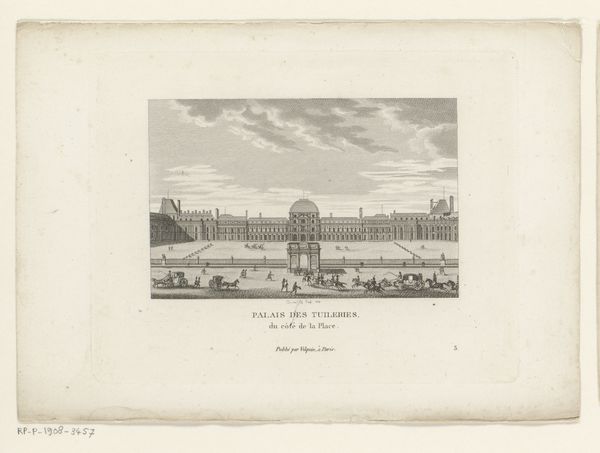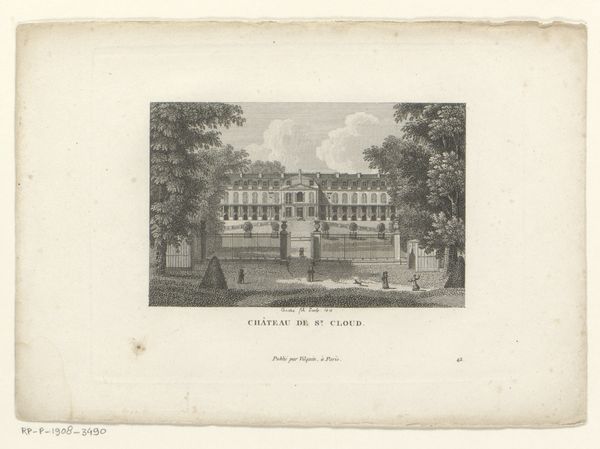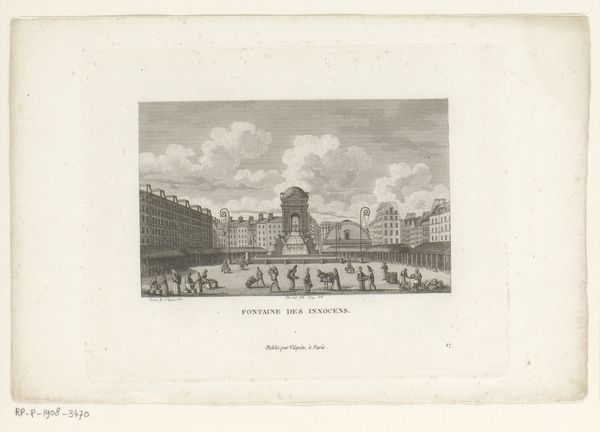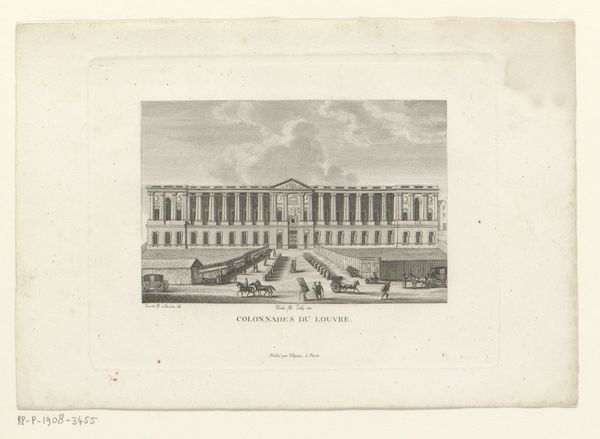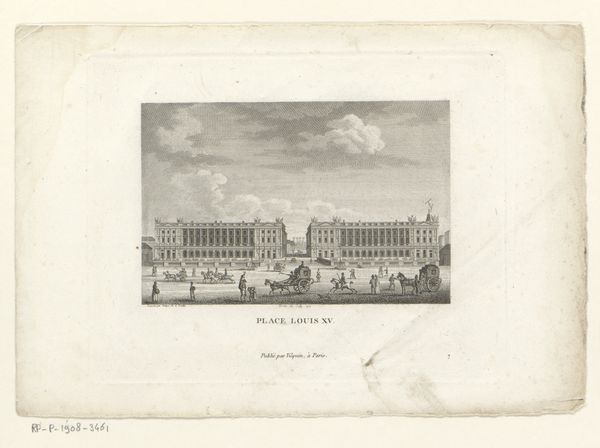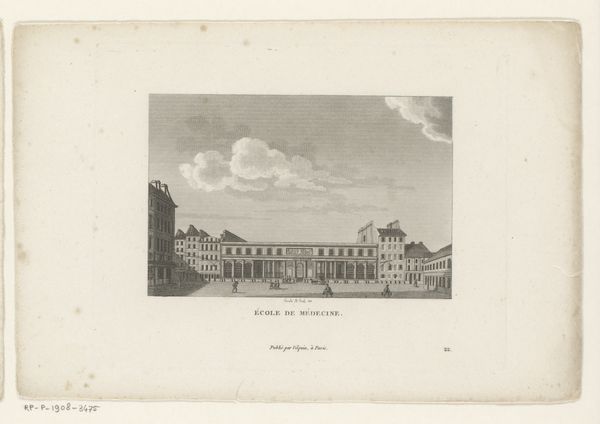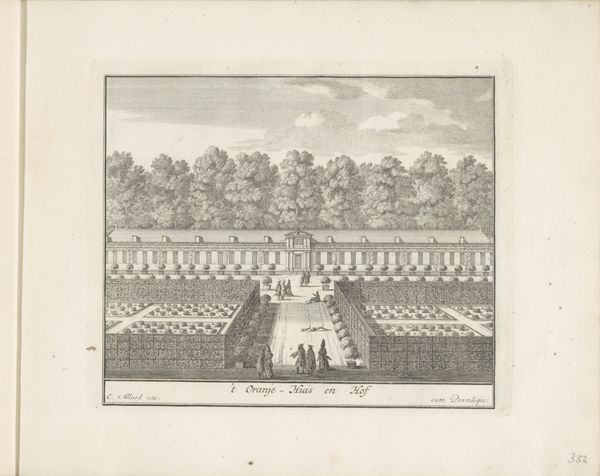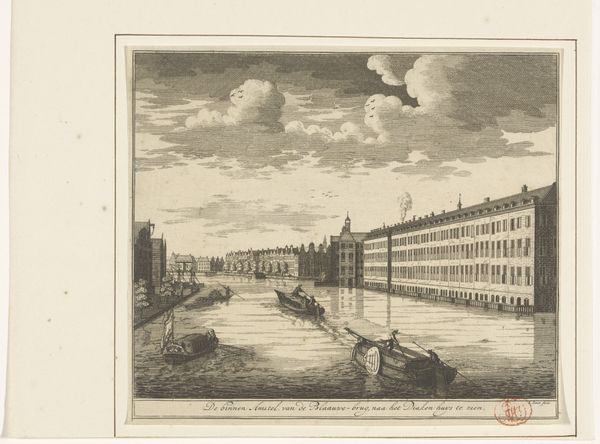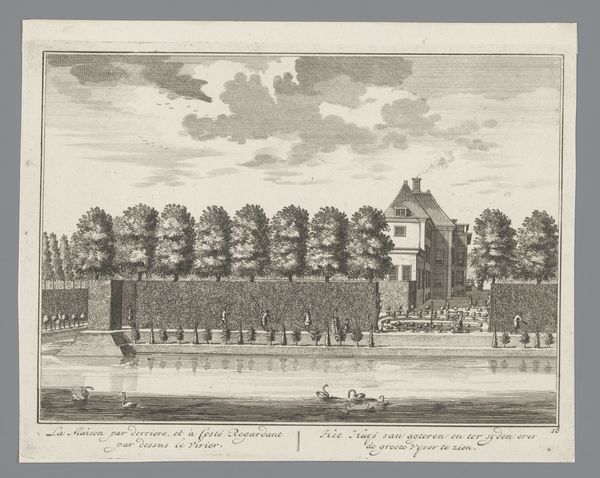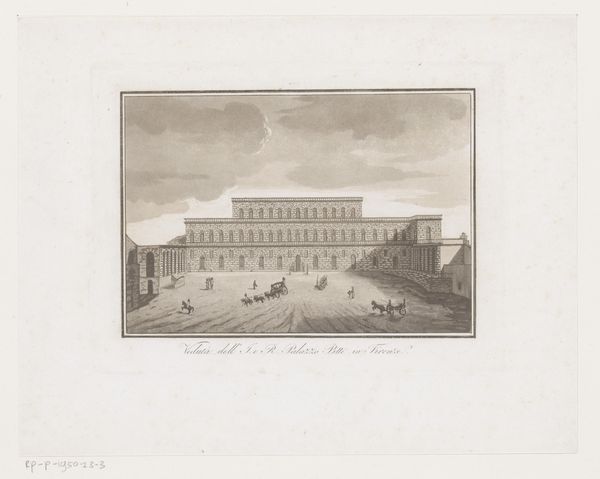
print, etching, paper, engraving
#
neoclacissism
# print
#
etching
#
old engraving style
#
paper
#
cityscape
#
engraving
Dimensions: height 124 mm, width 160 mm
Copyright: Rijks Museum: Open Domain
Curator: Before us we have François Louis Couché's "Gezicht op het Place des Vosges te Parijs" from 1818, currently held at the Rijksmuseum. The artwork utilizes etching and engraving on paper. Editor: It has such a severe, symmetrical layout, like a stage set for some rigid societal ritual. I find the rigid geometric construction, the austerity, quite imposing. Curator: Yes, the rigid composition reflects the prevailing Neoclassical aesthetics of the time. One should consider, however, how the print medium itself impacted production, making such scenes of urban grandeur accessible to a wider, consuming public beyond the aristocratic circles traditionally depicted. It is, at heart, a mass-produced item showing an aristocratic symbol. Editor: Mass-produced, certainly, yet look at the precision of those lines! Note the delicate hatching and cross-hatching that define the buildings and create a sense of depth, while offering some nuanced tones. I find it so precise, which amplifies its order and stoicism. Curator: Precisely! And it is crucial to note that such visual perfection demands incredible artisanal labor and highly specialized knowledge that would certainly be outside the lifestyles of many of its consumers. This artwork, therefore, participates in the societal forces of both democratization of knowledge, in tandem with the elitism inherent to art production. Editor: You highlight an interesting paradox. I, for one, remain fixated on the stark contrast between the solid architectural forms and the atmospheric sky. Those soft cloud forms mitigate the unyielding formality, offering the eye a point of release. The linear rigor versus organic form serves a striking aesthetic purpose. Curator: Viewing it from the vantage of accessible art, it served to cement an aspirational vision in the burgeoning bourgeoisie, of course. But the level of human effort and expense that engraving processes involved shouldn’t be discounted. It highlights social inequalities, even if it tries to give an illusion of uniformity, mirroring what happened in France and Europe at the time. Editor: An utterly fascinating discussion, wouldn’t you agree? A print, yes, but one deeply infused with visual drama and loaded symbolism. Curator: Indeed, prompting a needed understanding of both the artwork's context and its position as a crafted object amid the societal flux of its day.
Comments
No comments
Be the first to comment and join the conversation on the ultimate creative platform.
